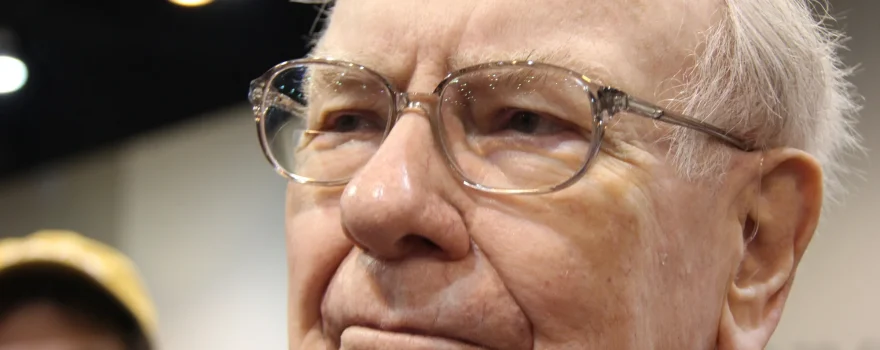
There are a few investors who are attracting room, quite similar to Berkshire Hathaway (BRK.A 0.62%) (BRK.B 0.44%) CEO Warren Buffett. Since he took the reins in 1965, he has led his Class A stock (BRK.A) to an average annual gain of 20.1%, which translates to a compound return of 3641613%, as of the end of 2021. While no investor is infallible, Buffett’s ability to pick winners has earned him a captive audience.
The easiest way for investors to take advantage of the Oracle of Omaha is to track Berkshire Hathaway’s quarterly filings on Form 13F with the Securities and Exchange Commission (SEC). Buffett’s “hidden” portfolio acquired three high-growth companies in the second quarter
The 13F is essentially a snapshot of what the smartest investment managers with $100 million in assets under management held at the end of the last quarter. It allows investors to see what these fund managers were buying, selling and holding, as well as establish which trends or industries are catching the attention of professional investment managers. Berkshire Hathaway filed exactly one week ago, on Aug. 15. August 15.
However, you may be surprised to learn that Berkshire Hathaway’s 13F can’t tell the whole story about Buffett’s direct and indirect holdings. For example, you won’t find any information about Warren Buffett’s most purchased stock over the past four years at 13F Berkshire. That’s because share repurchases are only disclosed in the company’s quarterly operating results. As of July 2018, Buffett and his right-hand man Charlie Munger control the $62.1 billion buyback of Berkshire Hathaway’s Class A and Class B shares (BRK.B).Something else from Berkshire Hathaway’s 13th floor plan does not disclose Warren Buffett’s secret portfolio. In 1998, Oracle of Omaha purchased reinsurer General Re for $22 billion. While the prize of that deal was reinsurance operations, General Re also operated a specialized investment branch known as New England Asset Management (NEAM). When the deal closed, NEAM and its assets became the property of Berkshire Hathaway.
Although Buffett and his investment team do not control New England Asset Management’s $5.9 billion in assets under management (as of June 30), the securities NEAM owns are ultimately part of Berkshire Hathaway.
According to New England Asset Management’s latest 13F filing, Buffett’s “hidden” portfolio bought three new supercharges of growth stocks. Nvidia
Although Oracle of Omaha doesn’t like to buy fast-growing tech stocks, it is now the proud indirect owner of Nvidia (NVDA 1.19%). 13F, filing with the SEC, notes that NEAM bought more than 3,000 shares of Graphics Card and Networking Solutions during the second quarter.
The thought process behind Nvidia’s addition likely stems from some combination of a stock that lost about half its value at one point during the second quarter, as well as the company’s enticing long-term growth prospects for its various operating segments.
While Nvidia is probably best known for its graphics cards, which have performed relatively well with the release of new gaming consoles and the rise of cryptocurrency mining, it’s the company’s data center solutions that are its most intriguing growth driver. Enterprises had already begun to steadily move data to the cloud before the COVID-19 pandemic. The pace of that shift has accelerated in the aftermath, leading to even greater demand from data centers. At this point, only supply chain issues have slowed Nvidia’s double-digit annual opportunity in developing data center solutions.
The company’s auxiliary operating segments could also be stellar by mid-decade. Offering solutions for next-generation vehicles, including autonomous vehicles, as well as offering a gateway to the meta-universe with its professional visualization software, gives Nvidia supercharged growth potential from what are currently less profitable operating segments.NextEra Energy
The second fast-growing product added in the second quarter by Buffett’s secret portfolio is electricity company NextEra Energy (NEE -0.94%). While NextEra doesn’t generate the same annual revenue growth as tech stocks, it is well ahead of virtually every other utility stock and has been doing so for more than a decade. Compared to its peers, NextEra is an absolutely reliable growth product.
What makes NextEra Energy such a superstar among utilities is its renewable energy projects. Among U.S. utilities, none produces more power from wind and solar. With up to $55 billion earmarked for mostly green energy projects between 2020 and 2022, and the company projecting up to 36900 megawatts of renewable energy projects in its backlog between 2022 and 2025, no other utility compares with NextEra as a major provider of renewable energy.
Although wind, solar and energy storage projects can be expensive, the company has been able to take advantage of years of historically low interest rates to push its green energy push forward. The end result is significant reductions in electricity generation costs and compound annual growth rates that have remained in the high single digits for more than a decade.
As an added bonus, NextEra Energy is also an Aristocrat dividend. This is the term given to 500 S&P-listed companies that have raised their underlying annual dividend for at least 25 consecutive years. NextEra has raised its payout for 28 consecutive years, and management expects double-digit percentage growth in the company’s base annual distribution through 2024.Chewy
The third and final supercharged growth product added to Warren Buffett’s secret portfolio in the second quarter is online product company Chewy (CHWY 1.02%). New England Asset Management opened its position with a stake of more than 1,600 shares.
One of the best aspects of pet industry stocks is that they are almost recession-proof. According to the American Pet Products Association, the percentage of U.S. households owning pets reached a record high of 70% in 2022 (at least at the time of the APPA surveys). According to the Association. Moreover, it’s been at least a quarter century, if not more, since pet spending in the U.S. has declined year after year. No matter what you throw at pet owners, they are always willing to open their wallets to ensure the health and happiness of their furry, feathered, scaly and gilled family members.
In addition to working in the highly defensive industry, what makes Chewy so great is its online focus. Partnering with more than 3,000 brands and offering more than 100,000 products online, Chewy has created an online pet store. Because Chewy doesn’t have to spend time guessing which products to put in brick-and-mortar stores, it is able to generate juicier gross margins than most traditional retailers in the pet industry.
What’s more, Chuy is using innovation to her advantage. She recently partnered with Trupanion to introduce CarePlus, a health insurance and wellness plan that covers preventive care and surgery. The targeted market for pet insurance in the U.S. has barely been penetrated. That should give Chewy and Trupanion a long runway to offer what should be a high margin product.




